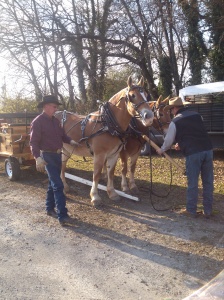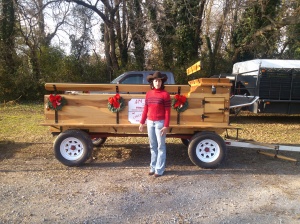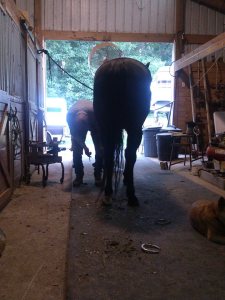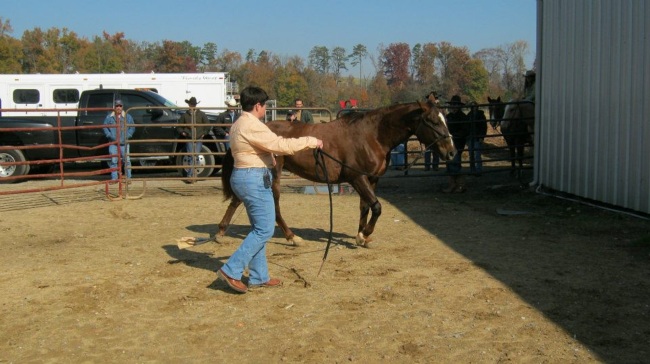If you’ve got anything to do with the barrel racing industry at all, you’ve no doubt heard the buzz about the first million dollar barrel race, The American, hosted by RFD-TV and sanctioned by Better Barrel Races. With the semi-finals held in Mesquite, Texas and the finals at the AT&T Stadium in Arlington, the American is a not only the most lucrative rodeo in the United States, it’s also the first time in history that men have been allowed to run barrels at a rodeo event.
Some of the top male riders in the country qualified to compete at the semi-finals but only one young man made it to the top twenty. That young man is Clint Sherlin of Athens, Tennessee. Bully By Design, also known as Red, is the horse that took Clint to the semi-finals. Red is the product of a long standing business partnership between the Sherlin family (Clint, his parents Joel and Nancy) and the Hayes family (Chris and Shelley, and daughters Bayli, Lilli, Maddi) of Philadelphia, Tennessee.
Clint and Red first shined in the spotlight when the pair won the NBHA World Championship in 2012, appearing on the cover of Barrel Horse News. The Hayes’ daughter, Bayli, has also gained notoriety with Red at several large barrel races as well and is becoming quite the jockey on such a powerful horse under Joel, Nancy, and Clint’s tutoring.
Having purchased two barrel prospects from the Sherlin and Hayes families, I have watched The American with great interest. However, it goes a whole lot deeper than that. You see, I’ve known Clint since he was a young kid riding any horse that was thrown his way and making it look good. Joel has also been my farrier for many years, not to mention that Joel and Nancy both have invested countless (and selfless) hours in me while trying to make me into a better jockey. We’ve went on road trips to barrel races together, and it’s always been an adventure from dodging tornadoes and mud to dealing with flat tires. All those memories are very precious to me and are the reason that I’ve taken such an interest in The American.
For Clint, and the rest of the Sherlin family, the road to The American has not always been an easy one. They definitely didn’t start out with the best horses. In fact, it was horses that no one wanted that gave them their start. For many years, they honed their riding and training skills on horses with issues that most people gave up on. Although difficult, and most certainly with a delayed pay day, those years of riding problem horses and making it work have not only turned them into one of the best riding and training teams in the country, but it’s also created a family that I would describe as “salt of the earth” type folks.
In a sea of top kicks and hundred thousand dollar living quarter trailers, it’s not unusual to see the brown and yellow “Double OO” trailer, or a 1975 Mercury Grand Marquis if the Sherlin clan is in town. While the rest of the world has to have the latest and greatest, its their genuine down to earth practicality and their focus and dedication to making the best horses that make them a rare gem in the barrel industry.
Quite frankly, I don’t think there’s been a historical race as full of hopes and dreams since the match race between Seabiscuit and War Admiral. The common man was a contender in that race too. In a couple of days Clint and Red will be making their run for the finals at The American. Not only will that run be making history, but it will also represent the hopes and dreams of two of the finest and most down to earth families in the barrel racing industry.
Ride hard Clint & Red!
Joel & Nancy at the parade with their draft horses
Joel shoeing SV Shawne Fire N Te, aka Fireman.
Our trip to the Futurity in Fort Smith in the Double OO
The Mercury on the way to the BFA in Oklahoma City. By the way, we’d blown a tire!










